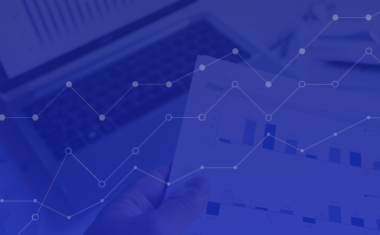Free Data Analytics Course
Jumpstart your journey with 25 essential learning units in data analytics. No cost, just knowledge.
If you’ve ever considered a job in data analysis, now is the time to take the leap. The Bureau of Labor Statistics projects that, between now and 2028, there will be a 20% rise in the number of available data analyst jobs.
But what does it take to fill one of these coveted roles? To do their work, data analysts have to have a diverse skill set. This includes a strong foundation in basic mathematics, data analysis techniques, and some soft skills.
In this post, we’ll look at the key skills that you’ll need to land your first job as a data analyst, and how to keep progressing in your career.
What Is a Data Analyst?
Data analysts comb through the large troves of data to which companies have access, and look for patterns and trends. For example, data analysts might use the available data to try and determine which SKUs are most popular for a specific customer segment, or what kinds of discounts work best at different times of the year.
Becoming a data analyst requires business intelligence and the ability to take a holistic approach. Not only does the job demand sharp technical skills. It also requires that you have soft skills, an understanding of statistical analysis, and strong data visualization skills.
Skills Required To Become a Data Analyst
Structured Query Language
SQL is an industry-wide mainstay used to update and communicate with databases. It also serves as a tool to access and manipulate data. Data analysts use SQL because it simplifies the process of storing and retrieving data. The syntax is intuitive, and the tool itself scales easily. If you aren’t yet familiar with SQL, or don’t know how it’s used to communicate with databases, check out our comprehensive guide to SQL.
Microsoft Excel

This might come as a surprise to industry outsiders, but Microsoft Excel is widely used by data analysts. It’s a go-to because it’s widely available, light, and quick with basic computations. Excel has a wide range of features that come in handy for data analysts, including functions, pivot tables, and visualizations. Excel won’t let you analyze huge data sets, but it is very useful for smaller projects and is a great introduction to data analysis as a field.
Programming in Python and R
Python and R are programming languages used by data analysts. They’re common in the field because they have intuitive syntax and powerful data analysis capabilities.
You might be wondering whether you should start with Python or R as your first programming language. It’s important to know that both languages do an excellent job with data cleaning, wrangling, and analysis. R has a slight edge when it comes to statistical programming languages and reporting, while Python might be slightly easier to learn for new programmers and has more diverse offerings.
You can’t go wrong when choosing between R and Python, but it’s important to choose one and stick with it until you understand how it can be used to manipulate data.
Basic Mathematics
At its most foundational level, data analysis boils down to a few mathematical skills. Every data analyst needs to be proficient at basic math, no matter how easy it is to do math with the libraries built into programming languages.
You don’t need an undergraduate degree in math before you can work in data analysis, but there are a few areas where you should concentrate your energies. That includes linear algebra, probability, statistics, and calculus. If you focus on these, the other things you’ll need to learn will be a breeze.
Data Collection

Data collection is the process of obtaining the data needed for your analyses. It’s the starting point for data analysis, and will impact the rest of the process.
There are various sources from which you can collect data. This includes both publicly available information and the data that your company has collected on its website and app. Data analysts often collaborate with database administrators and other colleagues to determine the right data sources to solve a specific problem.
Data Cleaning
The data that you collect won’t always be ready to analyze. There will likely be instances of erroneous or missing information. So data often needs to be cleaned and formatted to be used for analysis.
There are several steps in the data cleaning process. This includes removing duplicate entries, filtering outlier values, inputting missing values by using informed estimates, and fixing structural errors. Tools like OpenRefine and Trifacta Wrangler are often used to help with those steps.
Data Mining

In data analysis, data mining is also known as the knowledge discovery step. At this stage, you will analyze the dataset and look for patterns that could give insights into specific business problems.
Data mining starts with establishing the business objectives, followed by model building and an evaluation of the results. There are several techniques used to mine for patterns in datasets, including neural networks and machine learning algorithms like the K-nearest neighbor algorithm.
Data Modeling
Data models are created to visualize the entire data system. Think of these as a visual flowchart for the entire process.
There are three main kinds of data models:
Get To Know Other Data Analytics Students
Jo Liu
App Quality Analyst at Snap Inc.
Maura Fields
Data Analyst at Northeastern University
Bart Teeuwen
Global Business Analyst, Global Talent Intelligence (GTI) at Meta
Conceptual Data Models
These data models provide a high-level view of the system, which includes the business entities that produce the data under consideration and the relationships between them. Conceptual models are usually constructed in the initial stages of a project when the requirements are still being collected.
Logical Data Models
Logical data models give insights into the relationships between the entities within a data analysis project. They show the attributes of different data values, along with their relationships to each other and the other entities in the ecosystem.
Physical Data Models
These are the least abstract models. They show structures—such as the data warehouses and databases—that will be built to store the data that will be analyzed.
Extraction, Transformation, and Loading (ETL)
ETL is a three-step process of transferring data from various sources and structures into a data warehouse. You start by extracting data from selected sources, transforming it or cleansing it, and then loading it into the database.
There are various tools and techniques used at each stage. CRMs, websites, and ERPs are used for extraction. Deduplication, filtering, and validation are used in data cleaning. Finally, the transformed data is uploaded to the database and is ready to be analyzed.
Machine Learning

Machine learning helps computers make accurate observations or predictions without explicitly being taught to do so. It is very useful in data analysis because it can spontaneously unearth patterns autonomously. It makes the entire process more efficient and productive.
There are various machine learning approaches and algorithms that are used in data analysis. Linear regression, logistic regression, naive bayes, decision trees, and principal component analysis are some of the most popular ones.
MATLAB
MATLAB is a tool that translates mathematical approaches into schemas and algorithms that can be used in a scalable computational setting. Data analysts use MATLAB to organize data, look for patterns, and implement algorithms.
Data Analyst Soft Skills
Critical Thinking Skills
A career in data analytics demands that you evaluate problems from an objective standpoint, and propose solutions after synthesizing information from a variety of sources. You can build your critical thinking skills by working on your own data science projects and researching different problem-solving approaches.
Communication
A data analyst must be able to tell a story with their data. So they need to have excellent communication skills, including written correspondence and presentation skills.
Data Visualization
A good data analyst is able to both produce insights and present them visually. Check out this post on the different kinds of data visualization and how to use them.
Research
The only way that you can cover the gaps in your knowledge is by getting good at research. Here are a few data science resources to get you started:
Communities
News
Attention to Detail
Data analysts need to be detail-oriented so that their code performs. Practice this by going slowly, and being mindful. Then, once you’ve mastered your skills, you can start to move more quickly.
How To Acquire Data Analyst Skills

A degree in a computer science field is the most conventional way to gain the skills that you’ll need for a career in data analysis, as it will provide you with the theoretical grounding needed to succeed. But a degree is costly and does take four years.
Nowadays, it’s possible to fast-track your career in data analytics with a course or bootcamp. Bootcamps require intensive weeks of study, but you’ll leave with the skills required to work in data analytics. Some bootcamps even promise to help graduates help with their job search.
A data analytics bootcamp is a perfect choice for someone needing an instructor’s help without the cost of a degree. Practiced self-learners also have the option of using free, online resources.
FAQs about Data Analytics Skills
Is Coding Mandatory in Data Analytics?
Yes. To work in data analytics, you do need some degree of proficiency in coding. Python and R are the two most popular languages in the field.
Are Tableau Skills in Demand?
Tableau is one of the most popular tools to produce data visualizations, which is why it is in high demand in the data science industry.
Does Data Analytics Involve a Lot of Math?
You do need to be familiar with a few areas of math, including linear algebra, calculus, probability, and statistics.
Since you’re here…
Considering a career in data analytics? We can get you there. Don’t take our word for it – check out our student reviews. After just 6 months of study in our fully flexible Data Analytics Bootcamp, we’ll boost you into a job in the field or your tuition back. Get started now with our free data analytics course.






